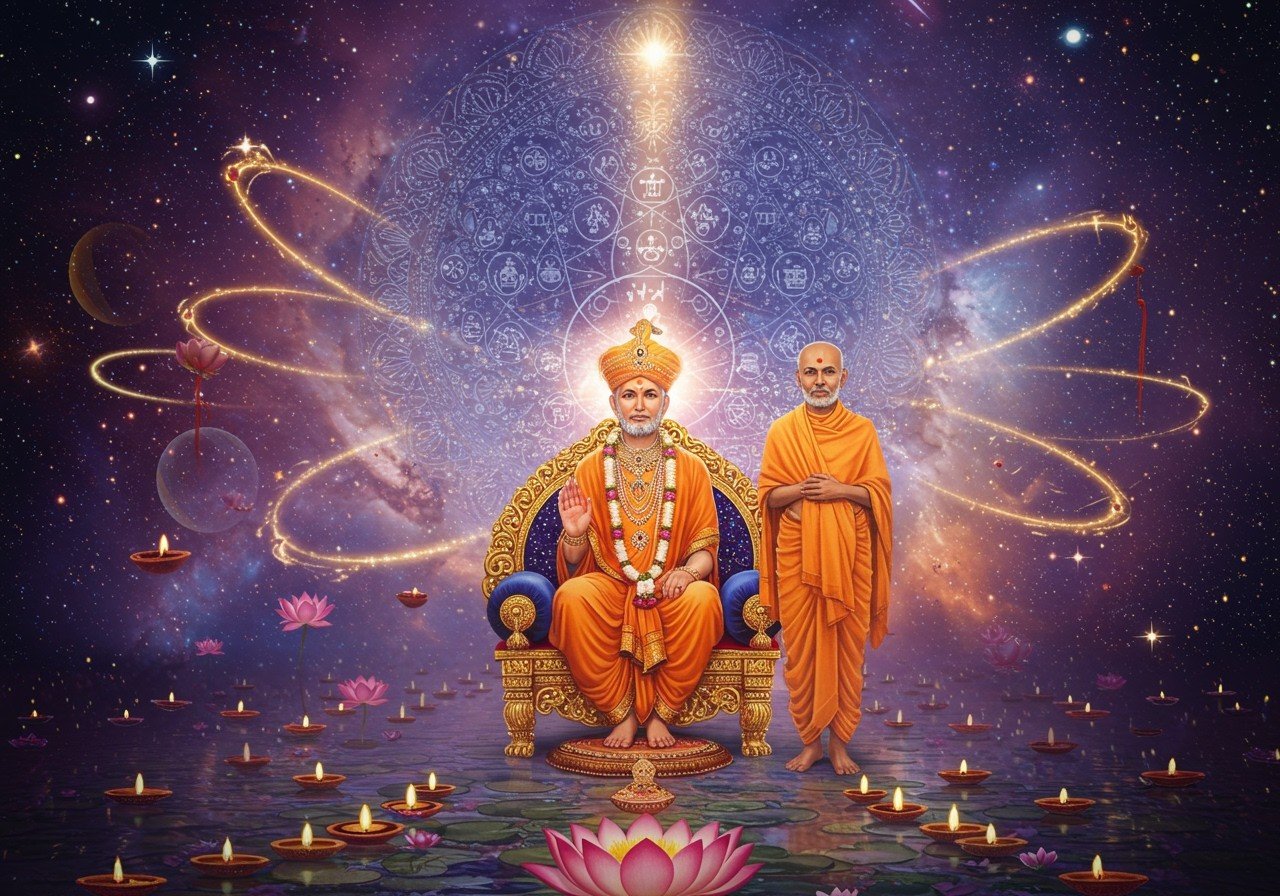
In the diverse landscape of Indian philosophies, the Akshar Purushottam Darshan holds a unique position within the Swaminarayan tradition. This philosophy emphasizes the dual worship of Akshar and Purushottam, offering profound insights into spiritual liberation (moksha) and personal evolution. By exploring this philosophy, we can grasp its significance in balancing traditional values with contemporary life, enriching the spiritual journey of culturally connected Indians. For those interested in delving deeper into Hindu philosophy, you can explore our guide on Hindu Philosophy Explained.
What is Akshar Purushottam Darshan?
Akshar Purushottam Darshan, also known as the Brahma-Parabrahma philosophy, is a distinct school of thought within the Vedanta tradition of Hinduism. Established by Bhagwan Swaminarayan in the early 19th century, it forms the foundation of the BAPS Swaminarayan Sanstha. This darshan emphasizes the worship of both Akshar (the ideal devotee) and Purushottam (the Supreme God) as a pathway to spiritual realization. Dive deeper into the architectural marvels of the Akshardham temple with our guide: Akshardham Temple: Architectural Wonders Explained.
Key Principles of Akshar Purushottam Darshan
Several core tenets shape the understanding and practice of Akshar Purushottam Darshan:
Five Eternal Entities
This philosophy posits the existence of five eternal entities: Jiva (individual souls), Ishwar (powerful beings), Maya (illusion or the material world), Aksharbrahman (the perfect devotee), and Parabrahman (the Supreme God). Each entity plays a distinct role in the cosmic order. Understanding their interplay is crucial for grasping the essence of this darshan. These entities provide a framework for understanding the nature of reality and the individual’s place within it. Delve into the significance of Hindu symbols with our resource: Hindu Symbols Explained.
The Distinction between Brahman and Parabrahman
Unlike some other Vedanta schools, Akshar Purushottam Darshan distinguishes between Brahman and Parabrahman. Aksharbrahman, the ideal devotee, serves Parabrahman and manifests on Earth through the Gunatit Sadhu. Parabrahman, also known as Purushottam Narayan, is the ultimate source and controller of the universe. This distinction emphasizes the importance of devotion and the guru’s role in spiritual progress. This unique interpretation adds depth to the understanding of the divine and the path to liberation.
Upasana: The Path of Worship
Upasana, the practice of worship, involves venerating God alongside his ideal devotee, the Gunatit Sadhu. This devotional practice aims to cultivate closeness to the divine. By striving to become “Aksharup” (embodying the qualities of Akshar), devotees deepen their connection with Purushottam. This path emphasizes the importance of both personal devotion and guidance from an enlightened guru.
The Significance of the Guru
The Gunatit Guru plays a crucial role in guiding devotees towards liberation. Considered the embodiment of Aksharbrahman, the Guru provides essential guidance and support on the spiritual path. Devotees are encouraged to serve and learn from the Guru, who acts as a living link to the divine. The guru’s role is pivotal in understanding and experiencing the core principles of the philosophy.
Liberation: Transcending Maya
The ultimate goal is Mukti (liberation), which involves transcending the illusion of Maya. This is achieved through devotion to Parabrahman and cultivating oneness with Aksharbrahman. By aligning oneself with the divine through devotion and service, individuals can overcome the limitations of the material world and attain spiritual freedom.
Core Beliefs for Spiritual Progress
To fully embrace this path, devotees cultivate faith in five key truths:
- God is the all-doer: Recognizing God’s omnipotence is fundamental to understanding the cosmic order. This belief fosters surrender and trust in the divine plan, providing a foundation for spiritual growth.
- God has a divine form: This principle emphasizes the personal aspect of the divine, allowing for a deeper connection through devotion. Visualizing and worshipping God in his divine form strengthens the bond between the devotee and the divine.
- God is supreme: Acknowledging God’s ultimate authority and power instills reverence and humility in the devotee. This understanding helps individuals prioritize spiritual values and seek guidance from the divine.
- God is eternally present on Earth in human form: This belief emphasizes the accessibility of the divine through the Gunatit Guru. The Guru’s presence provides a tangible connection to God, offering guidance and support on the spiritual path.
- The Gunatit Guru is the pathway to moksha: The Guru’s guidance is considered essential for attaining liberation. By following the Guru’s teachings and example, devotees gain the necessary knowledge and inspiration to progress on their spiritual journey.
Poojn.in: Supporting Your Spiritual Journey
Poojn.in, India’s leading provider of cultural and spiritual goods, offers a wide selection of items to support your practice of Akshar Purushottam Darshan. Explore our collection of:
- Sacred Texts and Literature: Deepen your understanding of Bhagwan Swaminarayan’s teachings. Vamavarti Shankh are available for your spiritual practice.
- Murtis (Idols): Find beautifully crafted murtis of Bhagwan Swaminarayan and Gunatitanand Swami. Laddoo Gopal Murti is an example of the divine idols we have available.
- Puja Items: Acquire all the essentials for your daily worship rituals, including Shiva Murti.
Visit www.poojn.in today to discover our extensive collection.
Plan Your Visit to Swaminarayan Akshardham
For a truly immersive experience, consider visiting the magnificent Swaminarayan Akshardham. Our comprehensive guide provides everything you need to know: Swaminarayan Akshardham: Your Complete Guide to Visiting.

